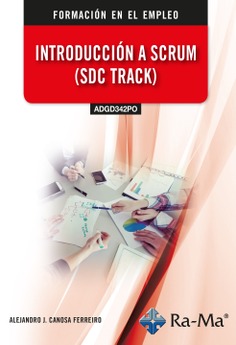(ADGD342PO) Introducción a SCRUM (SDC TRACK)
Alejandro Juan Canosa Ferreiro
El propósito de este libro es que el lector comprenda los componentes principales de Scrum, conozca el concepto de agilidad en gestión de proyectos y mejora continua, y presentar el flujo del proceso Scrum.
- Escritor
- Alejandro Juan Canosa Ferreiro
- Colección
- Formación en el Empleo (Especialidades Formativas)
- Materia
- Pruebas y verificación de software
- Idioma
- Castellano
- EAN
- 9788410181489
- ISBN
- 978-84-10181-48-9
- Depósito legal
- M-5187-2024
- Páginas
- 108
- Ancho
- 17 cm
- Alto
- 24 cm
- Peso
- 196 g
- Edición
- 1
- Fecha publicación
- 15-03-2024
401,59 MX$21,31 US$
Índice de contenido
ACERCA DEL AUTOR
CAPÍTULO 1. METODOLOGÍAS DE DESARROLLO ÁGILES
1.1 SCRUM. CONCEPTOS
1.1.1 Iteraciones. ¿Qué son?
1.1.2 Priorización de tareas
1.1.3 Reuniones del Sprint
1.2 KANBAN
1.2.1 ¿Qué es Kanban?
1.2.2 Tableros Kanban
1.2.3 Historia de Kanban
1.2.4 Principios de Kanban
1.2.5 Principales práctica s de Kanban
1.3 XP
1.3.1 Historia de XP
1.3.2 Utilización de metodologías hoy en día
1.3.3 ¿Qué es XP?
1.3.4 ¿Cómo funciona XP?
1.3.5 Valores de XP
1.3.6 Fases en XP
1.3.7 Roles de XP
1.4 ¿CUÁNDO UTILIZAR CADA UNA DE LAS METODOLOGÍAS?
1.5 DIFERENCIAS ENTRE SCRUM Y KANBAN
1.6 CÓMO COMBINAR SCRUM Y KANBAN
1.7 CÓMO SER ÁGIL SIN SCRUM
1.8 PROBLEMAS ACTUALES EN LOS EQUIPOS Y EMPRESAS ESPAÑOLAS
CAPÍTULO 2. CONCEPTOS FUNDAMENTALES DE LAS METODOLOGÍAS ÁGILES
2.1 ENTORNOS VUCA
2.2 METODOLOGÍAS TRADICIONALES CONTRA METODOLOGÍAS ÁGILES
2.3 DATOS ACTUALES DE LOS PROYECTOS CLÁSICOS Y ÁGILES
2.4 FORTALEZAS DE LAS METODOLOGÍAS ÁGILES
2.5 DOCUMENTACIÓN DE LAS METODOLOGÍAS ÁGILES
2.6 LA TRANSPARENCIA EN LOS PROYECTOS ÁGILES
2.7 COLABORACIÓN EN LOS PROYECTOS ÁGILES
2.8 EL MANIFIESTO ÁGIL
2.9 GESTIÓN DE PERSONAS
2.9.1 Sourcing global QA
2.9.2 Teletrabajo
2.9.3 Ejemplos reales de Sourcing global QA
2.9.4 Problemas con el Sourcing global QA
2.10 GESTIÓN DE CONFLICTOS EN PROYECTOS ÁGILES
2.11 NEGOCIACIONES EN PROYECTOS ÁGILES
CAPÍTULO 3. CONCEPTOS FUNDAMENTALES DE SCRUM
3.1 HISTORIA DE SCRUM
3.2 CICLO ODDA
3.3 LOS 12 PRINCIPIOS DEL MANIFIESTO ÁGIL
3.4 REQUISITOS PARA APLICAR SCRUM. PROBLEMAS AL APLICAR
3.4.1 Requisitos para aplicar
3.4.2 Problemas al implementar
3.5 ARTEFACTOS
3.5.1 Product Backlog. Principio de Pareto. Técnicas de priorización
3.5.2 Historias de Usuario
3.5.3 Sprint Backlog
3.5.4 Sprint Goal
3.5.5 Incremento
3.5.6 Workflow
3.5.7 DoR
3.5.8 Criterios de aceptación
3.5.9 DoD
3.5.10 Sprint Burndown Chart
3.5.11 Release Burndown Chart
3.6 ROLES
3.6.1 Scrum Master
3.6.2 Desarrolladores. Perfiles en T
3.6.3 Producto owner
3.6.4 Stakeholders
3.7 EVENTOS
3.7.1 TimeBoxing
3.7.2 Sprint
3.7.3 Sprint Planning. Refinent
3.7.4 Daily Scrum
3.7.5 Sprint Review
3.7.6 Sprint Retrospective
3.8 ESTIMACIONES RELATIVAS Y SUS TÉCNICAS.
3.9 MÉTRICAS DE SCRUM. TIPOS
3.9.1 Tipos de métricas
3.10 PATRONES DE SCRUM
3.11 CONSEJOS PARA IMPLEMENTAR SCRUM
3.12 DÓNDE CERTIFICARTE
3.13 CASO PRÁCTICO. DISEÑO DE UNA TIENDA VIRTUAL CON USER STORY MAPPING
CAPÍTULO 4. CREACIÓN Y GESTIÓN DE HISTORIAS DE USUARIOS.
4.1 ¿QUÉ ES UNA HISTORIA DE USUARIO Y EJEMPLO?
4.2 ¿QUÉ ES UN CASO DE USO? EJEMPLO
4.3 DIFERENCIAS ENTRE HISTORIA DE USUARIO Y CASO DE USO
4.4 CRITERIOS DE ACEPTACIÓN Y UN EJEMPLO
4.5 INVEST. CREACIÓN DE UNA BUENA HISTORIA DE USUARIO
4.6 REFINAMIENTO DE HISTORIAS DE USUARIO
USER STORY MAPPING. ROADMAP
4.6.1 User Story Mapping
4.6.2 Roadmap
GLOSARIO
MATERIAL ADICIONAL
Libros relacionados

(IFCT062PO) ISTQB - Certified tester advanced test analyst: Preparation course
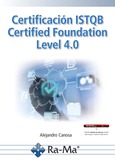
Certificación ISTQB Certified Foundation Level 4.0
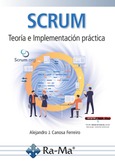
SCRUM. Teoría e Implementación práctica
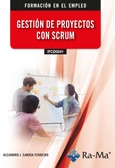
(IFCD0041) Gestión de Proyectos con SCRUM
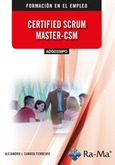
(ADGD338PO) CERTIFIED SCRUM MASTER-CSM
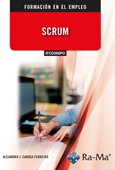
(IFCD069PO) SCRUM
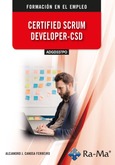
(ADGD337PO) CERTIFIED SCRUM DEVELOPER-CSD
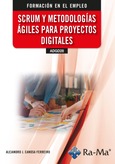
(ADGD28) SCRUM y metodologías agiles para proyectos digitales
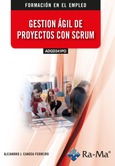
(ADGD341PO) Gestión ágil de proyectos con SCRUM
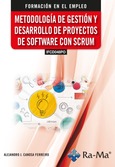
(IFCD048PO) Metodología de gestión y desarrollo de proyectos de software con SCRUM

